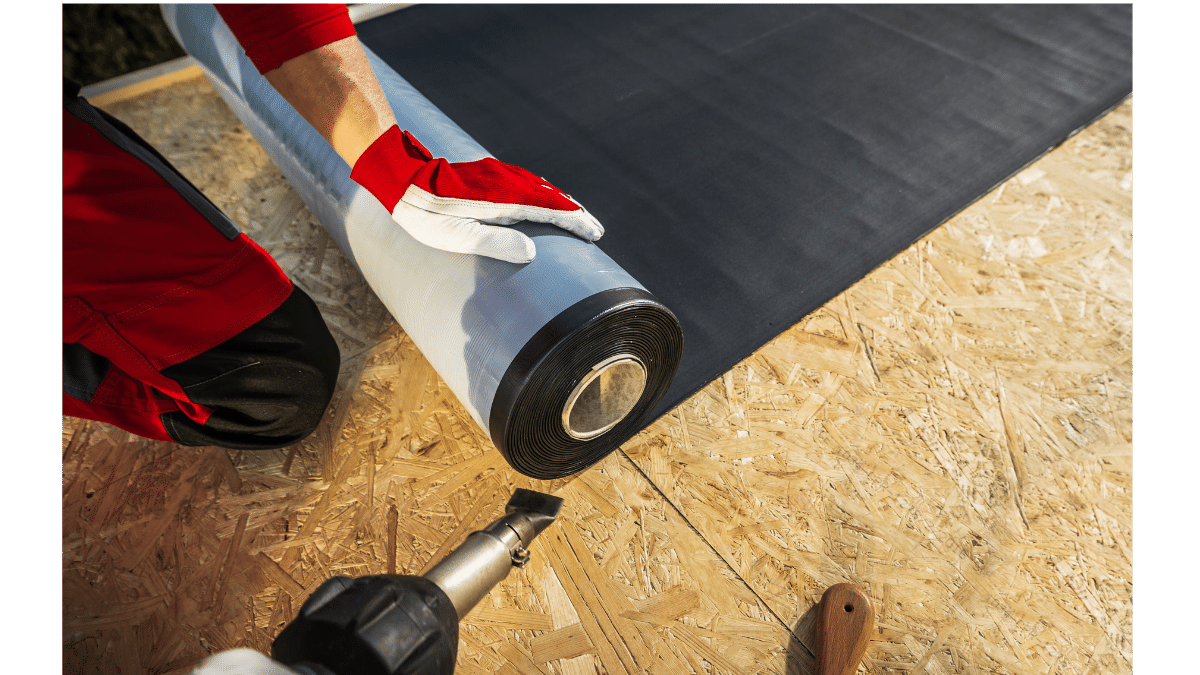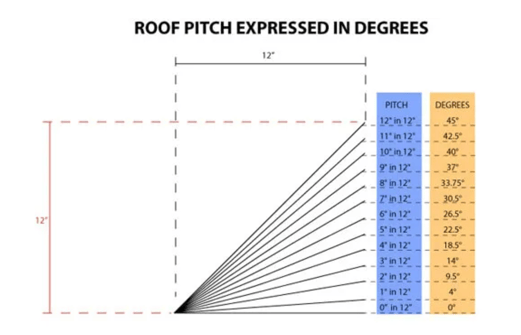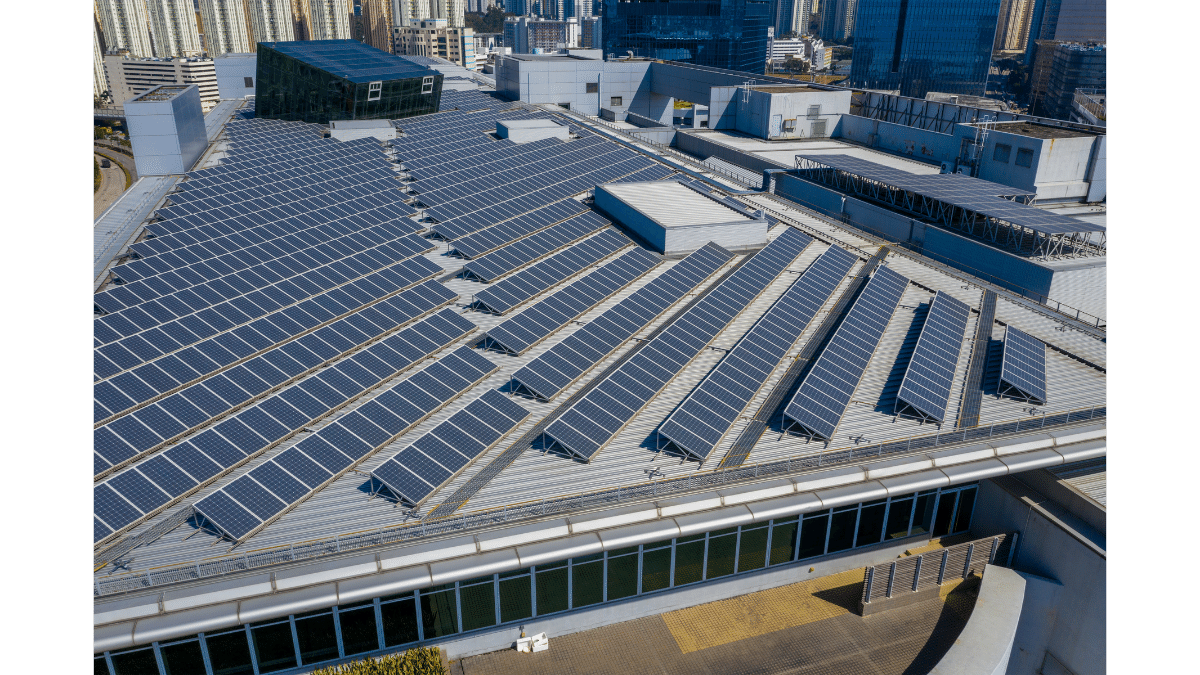For rooftop PV projects, documenting the characteristics of your roof is critical in determining if any work needs to be performed before solar can be installed and for a solar provider to give you a more accurate proposal. There are several elements to be considered when evaluating your roof's solar potential. Here's where to start:
📋 Roof type
Not all roofs are created equal. The roof type is determined by its shape, material, age, and condition. Commercial roofs are generally comprised of the following materials:
- Metal
- Built-up roofing (BUR) membrane
- Modified bitumen (asphalt and rubber)
- Single-ply
Single-ply is common in commercial buildings and usually consists of TPO (thermoplastic polyolefin), PVC (polyvinyl chloride), and EPDM (ethylene propylene diene monomer) roofing.
TPO roof example

EPDM roof example
The age and condition is important as well. If a roof is 25 years old and in poor condition, a reroof might be necessary. However, replacing a roof coincides well with installing solar since solar systems last around 25 to 30 years and new roofs can last anywhere from 20-40 years, depending on the material. The age and condition of your roof can typically be found in the construction drawings or even a roof warranty.
Knowing the type, age, and condition of a roof in advance can help a solar provider determine what type of racking system or work might need to be done (including estimated cost) before solar can be installed.
📐 Roof slope
The slope, or pitch, of a roof measures its incline and is typically expressed as a ratio of the number of inches the roof rises vertically for every 12 inches it extends horizontally. It can also be expressed in degrees or percent. Roof slopes are classified as either flat, low slope, or steep slope. Anything 30 degrees (1:1.73 or 57.74%) or less is generally considered a low slope, while anything less than 12.5 degrees is considered a flat roof.

Image credit: Roofcalc.org https://www.roofcalc.org/roof-pitch-calculator/
Documenting the slope helps the solar provider determine whether they can install ballasted racking, which holds the system in place with weights and no roof penetrations, versus a non-ballasted system where the system is anchored to the roof surface.
For example, a steep 45-degree slope roof (1:1 or 100%) will require a non-ballasted system where the rails are anchored to the steep roof surface.
📝 Roof warranty
A roof warranty is a guarantee provided by the manufacturer or a roofing contractor that covers any defects or failures in the roofing system. A manufacturer's warranty covers the materials for a typical lifespan while a workmanship warranty covers the installation work. A full-coverage warranty would combine both.
When a solar provider is selected to install a project, they'll work with whoever issued the warranty to make sure the warranty is not voided in any way.
🚧 Installation area
This is the available space on the roof where the solar system can be installed. Roofs often contain obstructions that can interfere with that placement. Typical obstructions include:
- Vents
- Skylights
- Wires and ropes
- HVAC equipment
- Water tanks
Taking photos or videos helps document the obstructions for a provider.

There are also fire setbacks - distances that the system must not be placed within for firefighters can access a roof in case of a fire. They typically range from 1.5 to 3 feet. While it's good to understand what your building's fire setbacks are, your solar provider should know what the Authority Having Jurisdiction (AHJ) dictates and incorporate those, as well as any obstructions, into their system design.
🏋️ Live and dead load
A solar installation will add weight to a building's roof. Understanding the limitations of your roof is determined by the live and dead load values. A live load is a temporary load placed on a roof, such as snow, wind, or even people. Dead loads are permanent and always present, and include the weight of the roof structure and any equipment installed on the roof.
The load limits, which are measured in pounds per square foot (psf), are typically found in construction drawings or roof warranties and can range from 20-25 psf. If the live and dead load is unknown, an assessment will need to be done by a certified roofing contractor or structural engineer to determine the values. Your solar provider will need these prior to any installation, as the load limits could affect the size and weight of the solar system, and in turn, affect the overall cost.
👋 Station A can help
If you're thinking about listing a project on the marketplace, provide high-level information to our clean energy advisors to start the process.